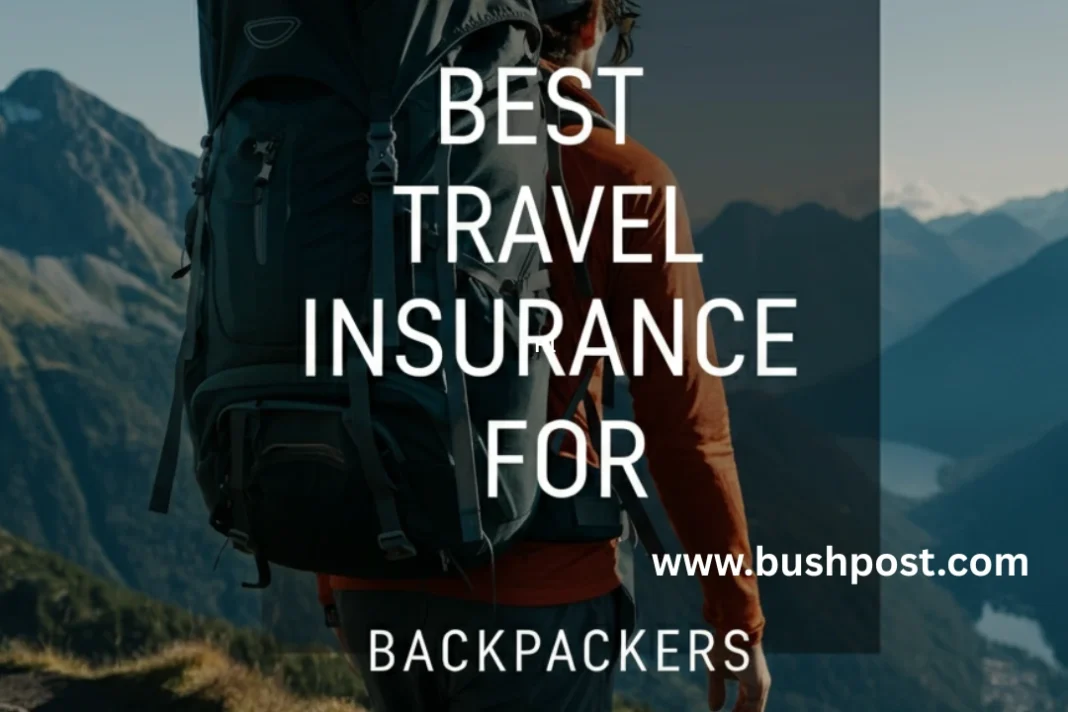If you’re gearing up for a big backpacking trip, you probably have a packing list a mile long—and plenty of excitement to match. One thing travelers sometimes leave to the last minute is figuring out the best travel insurance for backpackers. Yet it’s just as essential as choosing your route or deciding what goes in your backpack. Good travel insurance doesn’t just protect your stuff; it gives you peace of mind, so you’re free to make memories and take risks, knowing you have a safety net behind you.
Why Backpackers Need More Than Basic Travel Insurance
Most standard travel insurance policies are geared toward tourists with fixed itineraries. If you’re hopping from one country to another on a flexible schedule, the usual coverage might not be enough for your style of travel. Backpackers often book flights on the go, extend their adventures, or take unpredictable detours, so you need a plan that can keep up with you.
The best travel insurance for backpackers is designed for people who travel light but need their coverage to be heavy-duty—especially for longer trips, open-ended stays, and spontaneous activities.
Flexibility Matters
Look for insurance that lets you start your policy when you’re already abroad or extend it mid-journey. Being tied down by inflexible coverage just doesn’t work with the backpacking lifestyle.
What Should Be Included in Backpacker Insurance?
When you compare backpacker insurance plans, keep a close eye on what’s included. You’ll want comprehensive coverage so that medical bills or unexpected emergencies don’t derail your trip.
- Emergency Medical Expenses: Make sure this covers hospital care, doctor’s fees, and dental emergencies. Medical bills abroad can be a real shock.
- Medical Evacuation and Repatriation: If you need serious medical attention, you might have to be transported to another country—or even home. Look for substantial coverage here.
- Baggage and Personal Items Theft/Loss: Your backpack carries everything you care about on the road, so make sure your insurance has your back if things go missing.
- Trip Cancellation or Interruption: Sometimes plans change for reasons beyond your control. This section should cover your non-refundable costs if you suddenly have to call it quits or go home early.
Watch for Exclusions
Read the fine print so you’re not surprised later. Common exclusions include pre-existing medical conditions, mishaps while under the influence, or injuries from risky sports (unless you add adventure coverage).
Top Backpacker Insurance Providers Compared
The market for travel insurance for backpackers is filled with options, but a few companies have built strong reputations for understanding the needs of long-term, budget-conscious travelers. Spend time reading customer reviews and see how easy it is to file a claim—because when you need to use your policy, simple is best.
Features That Set the Best Providers Apart
Look for companies with 24-hour support, transparent policies, and easy online claims. If a provider understands the backpacker lifestyle, they’ll make it easy for you to renew or extend coverage from anywhere.
How Backpackers Can Save on Travel Insurance
Keeping costs reasonable is always top of mind for backpackers. Luckily, there are smart ways to lower your insurance price without losing essential benefits.
- Hike Up Your Deductible: If you’re comfortable with more of the risk, your monthly premium goes down.
- Adjust Your Coverage Areas: Exclude pricier regions (like the U.S. or Canada) if you don’t plan to visit them.
- Annual/Multi-Trip Plans: If you travel more often than you’re home, annual policies usually save more in the long run.
Don’t Forget the Details
Policy language can be dry, but skimming isn’t enough. Take time to check coverage limits and submit any questions to the insurer before you buy.
Adventure Activities and Sports Coverage
Backpackers are an adventurous crowd, often drawn to activities like hiking, scuba diving, snowboarding, or bungee jumping. Not every travel policy covers adventure activities out of the box. If you plan to get your adrenaline pumping, make sure your backpacker insurance can keep up—usually, this involves an add-on or choosing a specific plan that’s built for thrill-seekers.
Conclusion: Protect Your Journey
For an in-depth comparison of leading travel insurers and to find the most up-to-date policy options, consider visiting Compare the Market, a reputable resource for travelers worldwide.
At the end of the day, getting the best travel insurance for backpackers is about more than just ticking a box—it’s about making your trip safer and less stressful. You can’t control every situation on the road, but solid coverage lets you explore far and wide with fewer worries. Read reviews, compare plans, and pick the coverage that matches your route and risk level.
Frequently Asked Questions (FAQs)
1. Can I buy backpacker travel insurance after my trip has started?
Yes, several insurance providers allow you to purchase coverage while you’re already traveling. This is perfect for backpackers with changing plans or those who forgot to organize insurance before leaving.
2. Will my stolen phone or camera be covered?
Many backpacker travel insurance plans include theft of electronics, but always check the per-item limits. It’s also smart to keep receipts or proof of purchase, just in case.
3. What’s the difference between medical evacuation and repatriation?
Medical evacuation gets you to proper medical care if needed, while repatriation handles returning you to your home country if your condition requires it. Both are crucial for serious emergencies abroad.
4. Does backpacker insurance cover pre-existing medical conditions?
Some policies do, but you’ll probably need to disclose health conditions and might have to pay a little more. Always read the provider’s policy wording when applying.
5. How much medical coverage should I look for?
Experts recommend at least $100,000 in medical coverage for international travel. If you’re headed to countries with expensive healthcare, higher limits offer more peace of mind.
You may also read:How to Pack Light for a Long Trip


